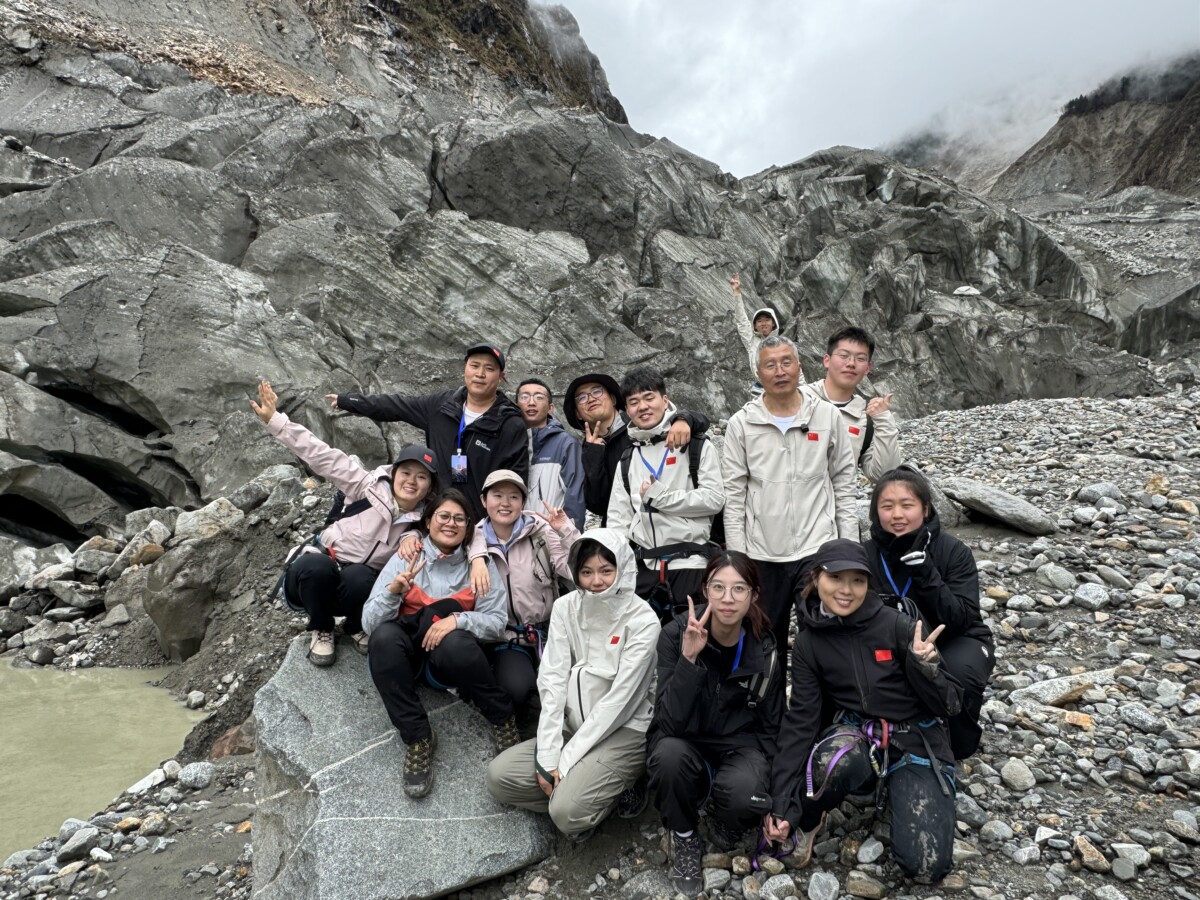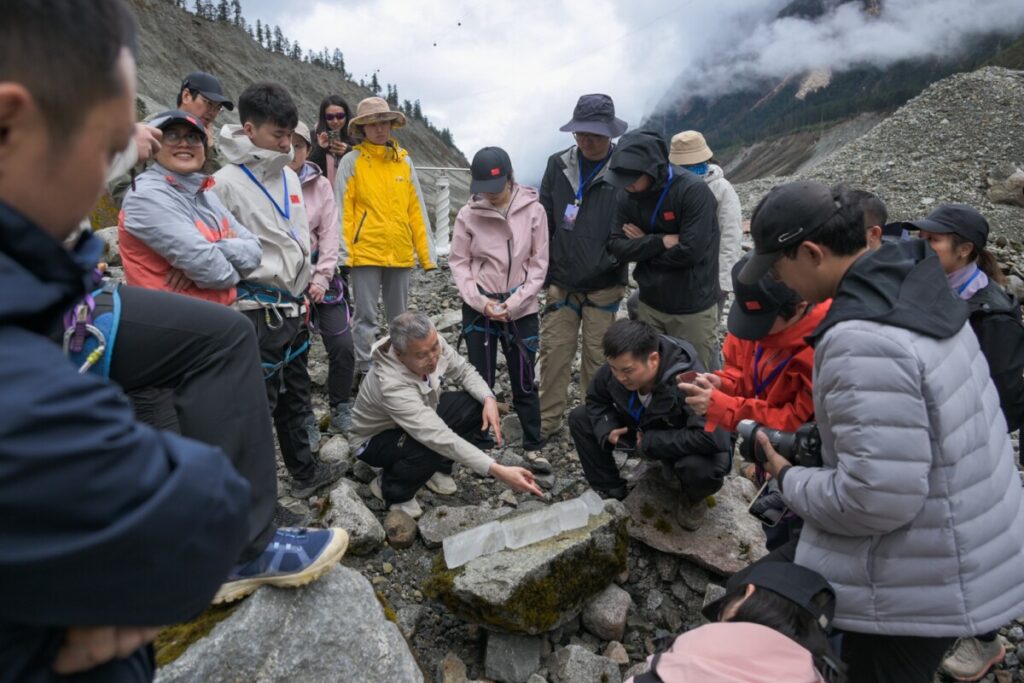Every year, in the pre-monsoon season (March - May), the Kathmandu valley experiences a double burden of exposure to high levels of forest fire (smoke) and air pollution. This year, too, was no different with the situation escalating toward its worst during the last week of March and the beginning of April.
The Hailuogou Glacier is located in Luding County of China’s Sichuan Province. The Hailuogou Glacier Forest Park, the only glacier-forest park in China, is one of the most important tourist attractions in the country, rated as a 5A-level tourist destination with excellent access, accommodations, attractions, activities and amenities (AAAAA). The glacier covers almost 25 square kilometres from 2900 up to 7556 metres above sea level. It is one of the few glaciers at low altitude that are relatively easily accessible. The debris-covered glacier serves as a training site for field-based glacier monitoring, largely due to the relatively ease of access.
Youth Glacier and Climate Change Scientific Exploration Campaign
In April 2024, I was fortunate to join the COP29 Youth Glacier and Climate Change Scientific Exploration Campaign at Hailuogou, where I spent four days alongside fellow early-career researchers from across China. We were guided by some of the country’s leading cryosphere experts, who shared insights into glacier monitoring, the effects of climate change, and the use of advanced technologies in glacier research, such as drone survey, Automatic Weather Station (AWS), and ice core drilling. This expedition provided great opportunities for me not only to learn but also to share information about cryosphere monitoring in the Hindu Kush Himalaya (HKH) region, carried out by ICIMOD and its partners. As we exchanged knowledge, we not only broadened our scientific understanding of cryosphere dynamics but also fostered cross-cultural connections within the research community and identified areas for potential research collaborations.

As a glaciologist, fieldwork is a fundamental part of my research, and I have undertaken numerous expeditions, each presenting its own challenges. I was pleasantly surprised that Hailuogou Glacier was easily accessible, unlike my experiences in Nepal, where at least one week is required to reach most glaciers. We reached Hailuogou after just a one-hour drive from Moxi old town, making this an unusually convenient field experience.

Effects of climate change
One of our key partners in China, the Institute of Mountain Hazards and Environment (IMHE) at the Chinese Academy of Sciences (CAS) is actively monitoring Hailuogou Glacier. Professor Liu Qiao from IMHE shared insights into ongoing activities on the glacier and highlighted its rapidly changing features, which illustrate the effects of climate change. One major transformation has occurred in the glacier’s icefall, which was previously connected to the glacier tongue. However, the tongue is now completely detached from the rest of the glacier due to thinning, leaving behind a steep cliff and exposed bedrock.
A cable car ride over the glacier offered us a unique view, further highlighting the dramatic changes to the icefall. In the past, trekkers could descend from a lateral moraine to the glacier, but the extent of glacier down-wasting has rendered the trail inaccessible. Once a popular attraction for its breathtaking beauty, the icefall is now steadily diminishing.
Extracting ice cores for glacier research
A visit to the Alpine Ecosystem Observation and Experiment Station of Mt. Gongga, a national station of IMHE led by Director Chang Ruiying, helped us gain a deeper understanding of the efforts made by our partners to monitor the changing patterns of the glacier and the technologies used for studying it. The station plays a crucial role in observing and conducting research within the alpine ecosystem, offering valuable insights into the impacts of climate change on glaciers such as Hailuogou.
Under the guidance of Professor Tian Lide from the Institute of Tibetan Plateau Research at the CAS, we learned about the process of extracting ice cores - one of the methods used to study past climates. Professor Tian Lide demonstrated how shallow ice cores are extracted at a chosen glacier site where the ice surface is exposed and suitable for drilling. The ice cores’ layers, accumulated over centuries, provide valuable clues about past climate conditions, including temperature, precipitation, and atmospheric composition. The ice traps air bubbles and particles such as dust, ash, and pollutants that reveal environmental pollution levels from the past. Studying these properties can improve our understanding of glacier health and enables researchers to both examine past biological activities involving microorganisms and pollen and to model future changes.
Protecting our glaciers
We, an animated group of young researchers, felt invigorated by the three days spent learning about the magnificent Hailuogou Glacier, its vulnerability to climate change, and the growing public concern over its future.

The experience of participating in this expedition has empowered me to inspire young researchers to delve into the study of the cryosphere, emphasising the critical need for ongoing glacier monitoring across the HKH region. This effort is vital for understanding the changes happening, the hazards involved, and the impacts on ecosystems and communities. To safeguard these essential resources, we must invest in training the next generation of researchers. With only a small fraction of glaciers studied, it is imperative that we expand our research efforts to deepen our understanding of their dynamics and the environmental changes they bring.
The expedition to Hailuogou Glacier not only expanded my understanding of cryosphere issues but also underscored the dedication, resilience, and passion required to work in glacial environments. I left with a profound sense of responsibility and a strong desire to contribute to the protection of glaciers and to ensuring that we respond effectively to the challenges posed by the changing climate.



